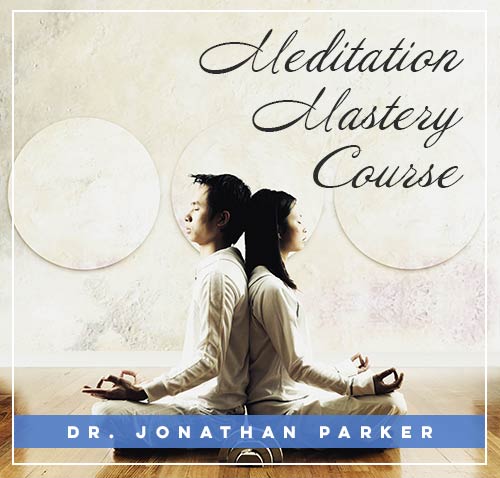Using Meditation for Pain Relief

Before diving in, please note: This post is for informational purposes only. If you’d like to know more about how we approach topics, feel free to check out our friendly Disclaimer Page.
Hey there, amazing readers! 🖐️ Just a quick note: yes, we know there are a lot of ads here. Trust us, we get it—it’s not the prettiest look, but they help us keep this blog alive and kicking. Those pesky little ads cover the costs of all the behind-the-scenes magic, from hosting and tech stuff to creating content we hope you’ll love.
We’re committed to delivering quality posts, and your support (even just sticking around despite the ads) means everything to us. So, bear with us, and thanks for helping us keep the good vibes rolling. Now, on to the fun stuff! 😉
TRANSLATE BUTTON AT THE END OF THE ARTICLE
Introduction to Using Meditation for Pain Relief
Meditation has long been recognized as a powerful tool for achieving mental clarity and emotional balance.
However, its benefits extend beyond the realm of the mind and can also be incredibly effective in managing physical pain.
By cultivating mindfulness and harnessing the mind-body connection, individuals can tap into the natural healing abilities of their own bodies to alleviate various types of pain.
This article will delve into the ways in which meditation can be used as a tool for pain relief, exploring different techniques and strategies that can help individuals better manage their discomfort and improve their overall well-being.
Understanding the Mind-Body Connection
The mind-body connection is a fundamental principle that underpins the practice of meditation for pain relief.
Research has shown that our thoughts and emotions can have a direct impact on our physical well-being, influencing everything from our immune response to our perception of pain.
By harnessing this connection through meditation, individuals can learn to better regulate their responses to pain, ultimately reducing its intensity and frequency.
Through focused awareness and intentional breathing, individuals can create a more harmonious relationship between their mind and body, leading to decreased pain levels and improved quality of life.
Types of Pain Meditation Can Help Alleviate
Meditation can be a valuable tool for managing a wide range of pain conditions, including but not limited to:
Chronic pain: Meditation can help individuals cope with the persistent discomfort associated with conditions such as arthritis, fibromyalgia, and migraines.
Acute pain: In situations of sudden injury or post-operative recovery, meditation techniques can help individuals find relief and promote faster healing.
Emotional pain: Meditation can also be effective in addressing emotional distress that manifests as physical pain, such as tension headaches or stomachaches.
Neuropathic pain: By calming the nervous system, meditation can help reduce the intensity of nerve-related pain conditions like neuropathy or sciatica.
Benefits of Incorporating Meditation into Pain Management
There are numerous benefits to incorporating meditation into a pain management routine, including:
Reduced pain perception: By cultivating mindfulness and relaxation through meditation, individuals can decrease their sensitivity to pain signals.
Improved emotional well-being: Meditation can help individuals cope with the emotional toll of chronic pain, reducing stress and promoting a sense of calm.
Enhanced quality of life: Through regular meditation practice, individuals can experience increased mobility, better sleep, and overall improved functioning.
Decreased reliance on medication: By providing a natural alternative for pain relief, meditation can reduce the need for pharmaceutical interventions and their associated side effects.
Techniques for Meditating to Relieve Pain
There are several techniques that individuals can use to meditate for pain relief, including:
Mindfulness meditation: By focusing on the present moment without judgment, individuals can develop a greater awareness of their pain and learn to accept it without resistance.
Guided imagery: Visualization techniques can help individuals create mental images that promote relaxation and reduce pain perception.
Body scan meditation: By systematically scanning the body for areas of tension or discomfort, individuals can release physical and emotional pain held in the body.
Deep breathing exercises: Controlled breathing can help individuals calm the nervous system, reduce stress, and alleviate physical tension associated with pain.
Mindfulness Meditation and Pain Relief
Mindfulness meditation is a powerful practice that can be particularly effective in relieving pain.
By cultivating a non-judgmental awareness of the present moment, individuals can learn to observe their pain without becoming overwhelmed by it.
Through mindfulness meditation, individuals can develop a greater sense of control over their pain and reduce their emotional reactivity to it.
By focusing on the breath and staying present with their sensations, individuals can create a sense of spaciousness around their pain, allowing it to exist without dominating their experience.
Guided Imagery for Pain Management
Guided imagery is a technique that involves creating mental images that promote relaxation and reduce pain perception.
By visualizing peaceful scenes or engaging in imaginary journeys, individuals can distract themselves from their pain and create a sense of calm within their bodies.
Guided imagery can help individuals tap into their natural ability to heal and create a positive internal environment that supports pain relief.
By engaging the power of the imagination, individuals can harness the mind-body connection to promote healing and reduce their experience of pain.
Body Scan Meditation for Pain Reduction
Body scan meditation is a practice that involves systematically scanning the body for areas of tension or discomfort.
By bringing focused attention to each part of the body, individuals can release physical and emotional pain held in the tissues.
Body scan meditation can help individuals cultivate a greater awareness of their bodies and develop a sense of compassion towards themselves.
By acknowledging and releasing areas of pain, individuals can create space for healing and relaxation, ultimately reducing their overall experience of discomfort.
Deep Breathing Exercises for Pain Relief
Deep breathing exercises are a simple yet powerful tool for managing pain.
By slowing down the breath and focusing on deep, diaphragmatic breathing, individuals can activate the body’s relaxation response and reduce the perception of pain.
Deep breathing can help individuals calm the nervous system, lower stress levels, and promote a sense of well-being.
By incorporating deep breathing exercises into their daily routine, individuals can create a foundation of relaxation and resilience that supports their overall pain management efforts.
Incorporating Meditation into Your Daily Routine
Incorporating meditation into your daily routine can be a transformative way to manage pain and improve your overall well-being.
Here are some tips for making meditation a regular practice in your life:
Start small: Begin with just a few minutes of meditation each day and gradually increase the duration as you become more comfortable with the practice.
Find a quiet space: Choose a quiet, comfortable place where you can meditate without distractions.
Set a consistent time: Establish a regular meditation schedule that works for you, whether it’s in the morning, during your lunch break, or before bed.
Experiment with different techniques: Explore various meditation practices to find what works best for you and your pain management needs.
Tips for Using Meditation as a Tool for Pain Relief
When using meditation as a tool for pain relief, consider the following tips to enhance your practice:
Stay consistent: Regular, daily practice is key to reaping the benefits of meditation for pain relief.
Be patient: It may take time to see significant improvements in your pain levels, so be patient with yourself and trust the process.
Listen to your body: Pay attention to how your body responds to different meditation techniques and adjust your practice accordingly.
Seek support: Consider joining a meditation group or working with a meditation teacher to deepen your practice and receive guidance tailored to your specific needs.
Seeking Professional Guidance for Meditation and Pain Management
While meditation can be a powerful tool for managing pain, it is advisable to seek professional guidance when incorporating it into your pain management routine.
A healthcare provider or meditation teacher can offer tailored advice and support to help you maximize the benefits of meditation for pain relief.
By working with a professional, you can receive personalized guidance on meditation techniques, practice recommendations, and strategies for integrating meditation into your overall pain management plan.
Remember that you don’t have to navigate this journey alone, and seeking support can enhance your experience and outcomes.
Conclusion
In conclusion, meditation can be a valuable and effective tool for managing pain and improving overall well-being.
By harnessing the mind-body connection and cultivating mindfulness, individuals can reduce their sensitivity to pain, enhance their emotional well-being, and improve their quality of life.
Through techniques such as mindfulness meditation, guided imagery, body scan meditation, and deep breathing exercises, individuals can tap into their natural healing abilities and find relief from various types of pain.
By incorporating meditation into their daily routine and seeking professional guidance when needed, individuals can unlock the transformative power of meditation for pain relief.

The Enlightenment Journey is a remarkable collection of writings authored by a distinguished group of experts in the fields of spirituality, new age, and esoteric knowledge.
This anthology features a diverse assembly of well-experienced authors who bring their profound insights and credible perspectives to the forefront.
Each contributor possesses a wealth of knowledge and wisdom, making them authorities in their respective domains.
Together, they offer readers a transformative journey into the realms of spiritual growth, self-discovery, and esoteric enlightenment.
The Enlightenment Journey is a testament to the collective expertise of these luminaries, providing readers with a rich tapestry of ideas and information to illuminate their spiritual path.
Our Diverse Expertise 🌟
While our primary focus is on spirituality and esotericism, we are equally passionate about exploring a wide range of other topics and niches 🌍📚. Our experienced team is dedicated to delivering high-quality, informative content across various subjects ✨.
To ensure we provide the most accurate and valuable insights, we collaborate with trusted experts in their respective domains 🧑🏫👩🏫. This allows us to offer well-rounded perspectives and knowledge to our readers.
Our blog originally focused on spirituality and metaphysics, but we’ve since expanded to cover a wide range of niches. Don’t worry—we continue to publish a lot of articles on spirituality! Frequently visit our blog to explore our diverse content and stay tuned for more insightful reads.






